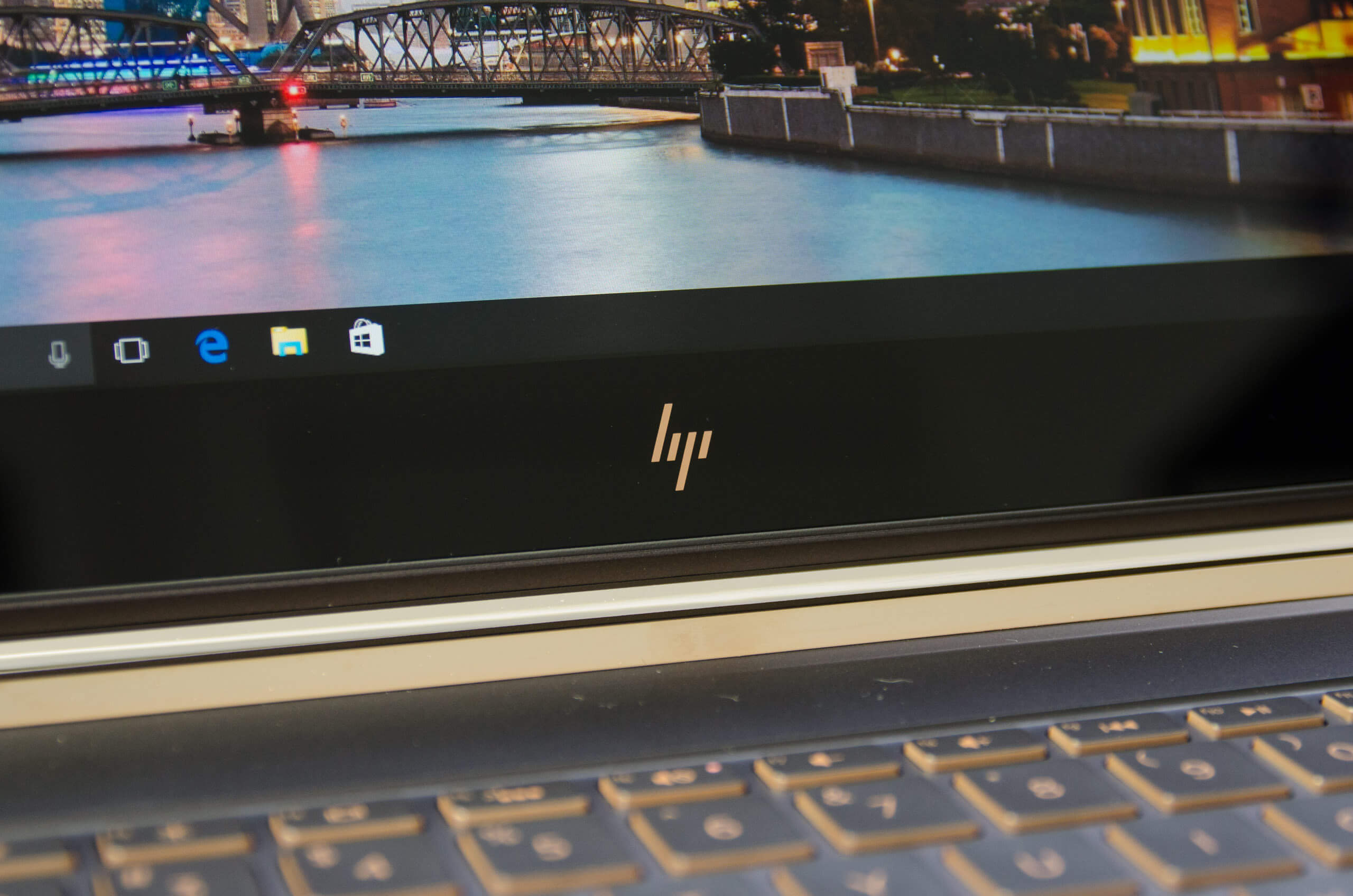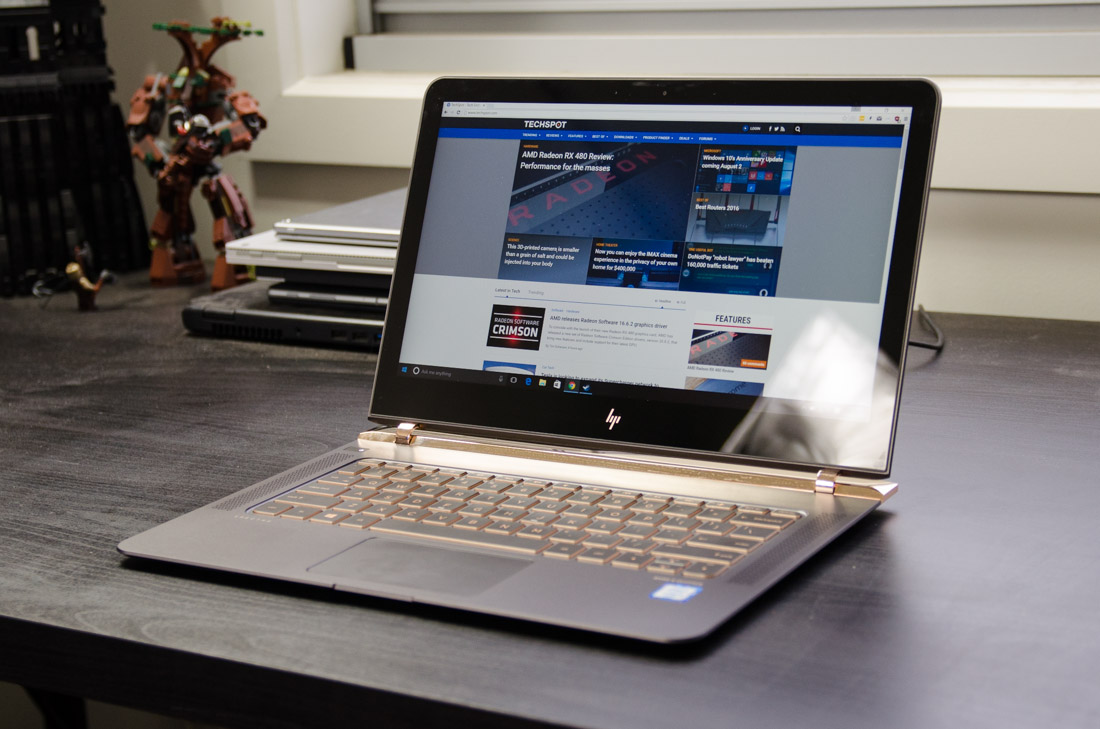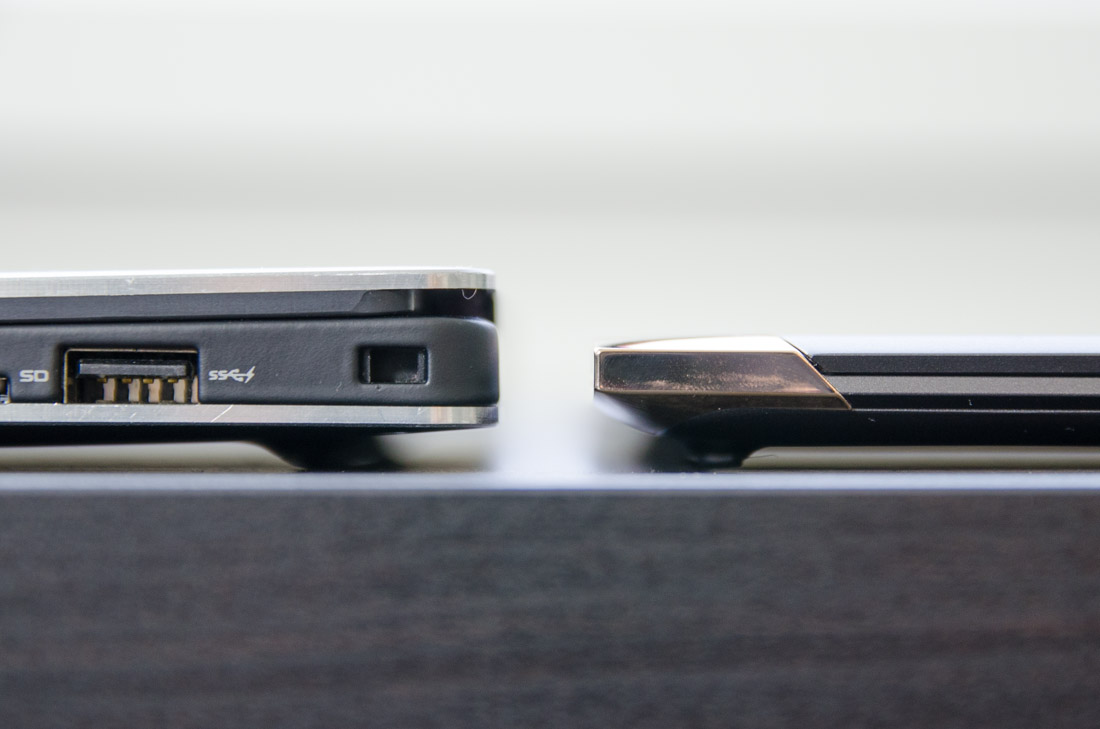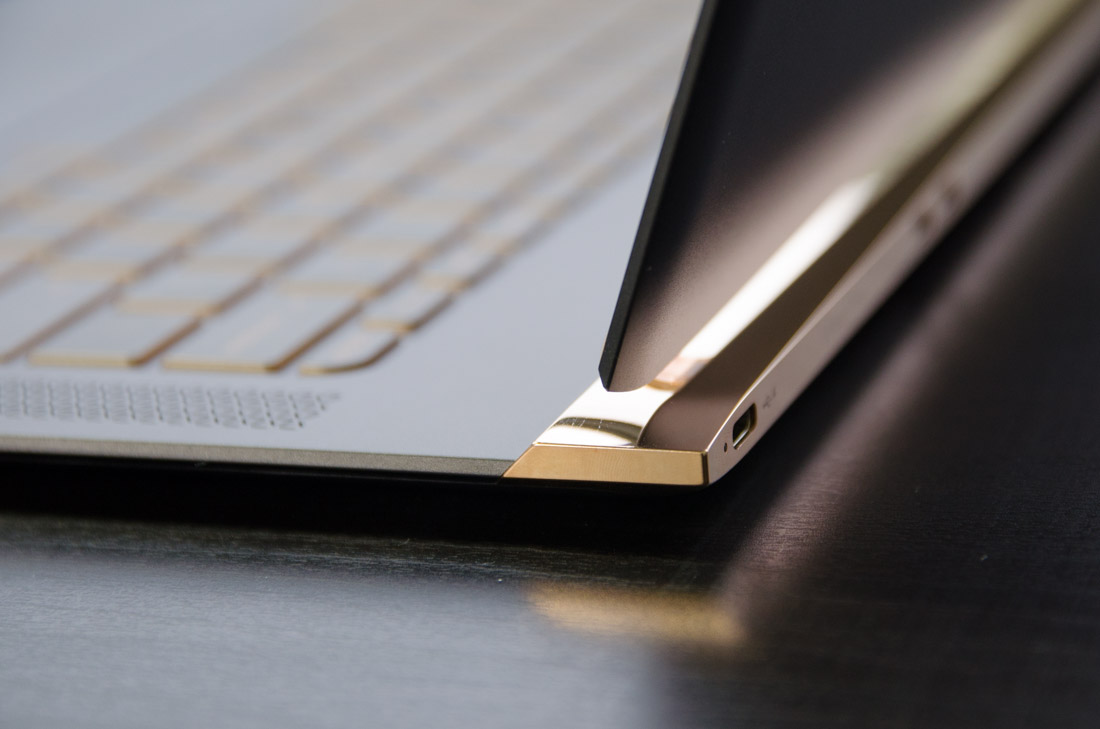HP's Got a Winner on Its Hands
After using the HP Spectre for a few weeks now, there is no doubt in my mind that this is one of the best laptops on the market. It's a fantastic combination between performance and portability, something that is rarely seen in the market, especially in Windows 10 devices.
The Spectre's design is superb. The metal body is sleek and minimalist, with a classy use of gold highlights complementing the black-brown design very nicely. The non-traditional hinge design adds a point of interest to the premium chassis, while the new HP logo is something that was widely praised by everyone I showed the laptop to.
And let's not forget just how thin this laptop is, making it extraordinarily portable and visually stunning.
The Spectre also succeeds in ways that other thin laptops have failed. The keyboard is a joy to type on, providing great tactile feedback and travel distance that is easily as good as thicker laptops. The collection of three USB-C ports (two of which provide Thunderbolt 3) is far more user friendly than just a single port, and although there's no full-sized USB, HP includes an adapter in the box.
Speaking of ways the MacBook failed, there is no need to worry about the HP Spectre's performance. Rather than opting for an Intel Core M processor, HP provides performance anywhere from 30 to 40 percent better using Core i5 or i7 CPUs. This laptop is a great option for light usage or day-to-day productivity, and I had no concerns about performance at any stage during my time with it.
If you're a creative professional, you'll be glad to know that the Spectre's display is one of the best in its class, particularly concerning color accuracy. The 1080p IPS LCD is satisfactorily sRGB compliant, similar to Microsoft's Surface Book, while delivering great viewing angles and decent contrast. The resolution isn't as high as you'd get from some competing laptops, and there is no touch option, but in general I was happy with this laptop's display.
The HP Spectre (right) is noticeably slimmer than the Dell XPS 13 (left)
Battery life isn't particularly amazing from the Spectre. This is the one major trade-off and something buyers will need to consider: do you want a more portable design, or better battery life?
As far as pricing is concerned, this is a premium laptop and is priced as such. The base model that we tested with a Core i5 CPU and a 256 GB SSD, will set you back $1,169.99, which is $100 less than Apple's slower 12-inch MacBook. Upgrading the storage to 512 GB and processor to a Core i7 raises the price to $1,499.99, which is also competitive. In Australia, the HP Spectre starts at AU$2,399.
Compared to other Windows 10 laptops, the excellent Dell XPS 13 in the most similar configuration is available for $1,149. The XPS 13 delivers great battery life on a noteworthy design, but the Spectre is thinner and lighter. Lenovo's Yoga 900 is $1,199 and includes a higher resolution display and a Core i7 as standard, which is another option at a similar price.
All in all, the HP Spectre is a fantastic laptop that competes really well with the best Windows devices on the market and it is one of few ultrathin devices that don't compromise on performance.
Pros: Amazingly thin with a sleek, sexy metal design. Performance is not compromised in any way. Awesome keyboard features surprisingly good travel distance. Great display. Three USB-C ports, two Thunderbolt 3 capable.
Cons: Battery life is average. No touchscreen option or ability to get more RAM.




